
Smart.
Wireless.
Autonomous.
Battery-powered, industrial-grade IoT sensor solution with LoRaWAN® for outdoor use.
WILSEN.sonic for Intelligent Fill Level and Distance Measurement


Standardized LoRa Technology

Easy Installation and Operation
Maximum Precision and Flexibility
Applications
Smart Cities and Industries
Waste Management
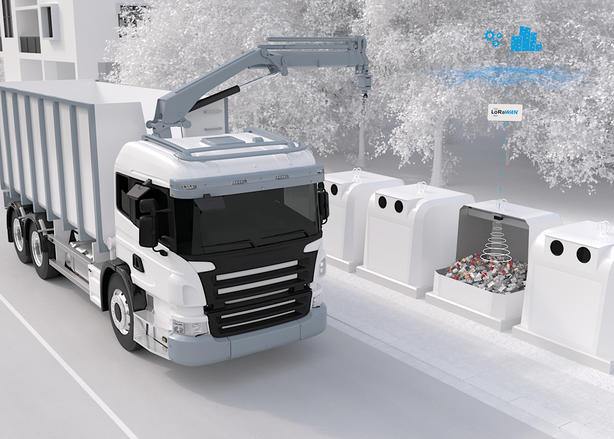
The demands placed on cities and municipalities to provide citizens with convenient, environmentally friendly living arrangements are increasing. The WILSEN.sonic sensors enable intelligent disposal management, in which the filling levels of used glass, old clothes, and recyclables containers are monitored remotely so that the containers are only collected once filled to a set amount. This leads to more efficient route planning and thus results in fewer emissions, traffic jams and noise in the urban area.
At the same time, this concept can also be successfully transferred to extensive company premises of manufacturing companies where recycling containers are used on a large scale. The integration of WILSEN.sonic IoT sensors makes it possible to optimize in-house waste disposal processes, thus saving time and money.
Storage Silos and Tanks
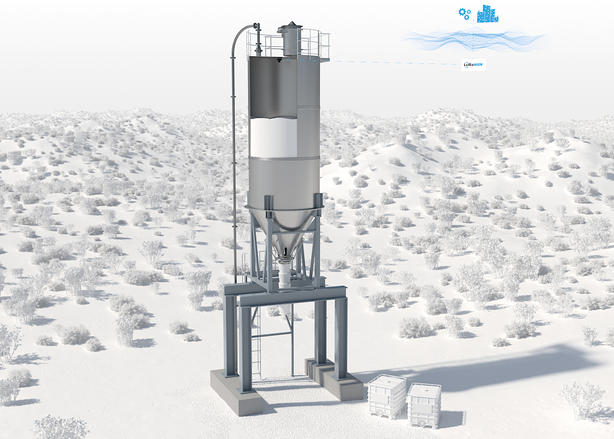
Regardless of whether bulk materials of various kinds or liquids are to be detected: The battery-operated WILSEN.sonic sensors offer both public institutions and industrial companies an efficient solution for gaining insights into a wide variety of containers without the need for complex wiring.
Depending on the type and size of the container, the Pepperl+Fuchs portfolio comprises various WILSEN.sonic variants with different ranges. While the versions with a detection range of up to 2500 mm are ideal for compact intermediate bulk containers (IBC), the WILSEN.sonic version with a detection range of up to 7000 mm is used in larger storage tanks such as the salt silo shown here. Thanks to the high degree of protection (IP66/67), the sensors are also reliably protected at all times against the ingress of liquids or dust particles in the containers.
Smart Environment
Rainwater Retention Basins
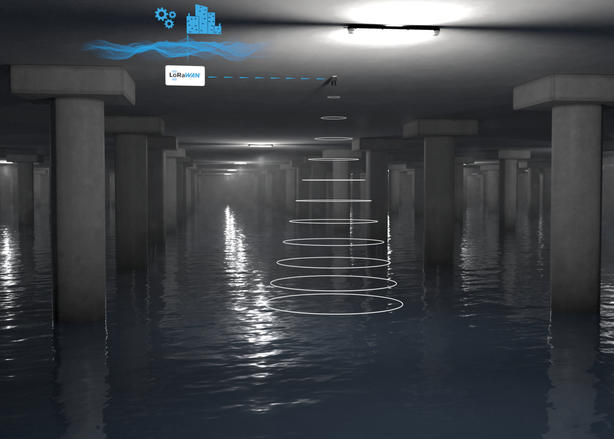
In urban areas sealed by enormous concrete surfaces, underground rainwater retention basins are used to cushion heavy rainfall events and prevent flooding. With the help of WILSEN.sonic sensors, the water level in these reservoirs can be monitored even more efficiently: Mounted wirelessly on the ceiling of the retention basin, the sensor is protected against flooding by the water masses thanks to protection class IP66/67. Measured values are then reliably transmitted out of the underground basin. The integrated long-life high-performance battery lasts for years, saving service personnel frequent, time-consuming descents into the basin.
Thanks to its long transmission range, the WILSEN.sonic is also able to transmit fill levels to the nearest LoRa gateway even from remote above-ground rainwater retention basins. The wide temperature range of -25 ... 70 °C guarantees smooth operation of the sensor even in direct sunlight or harsh winter weather.
Flood Protection
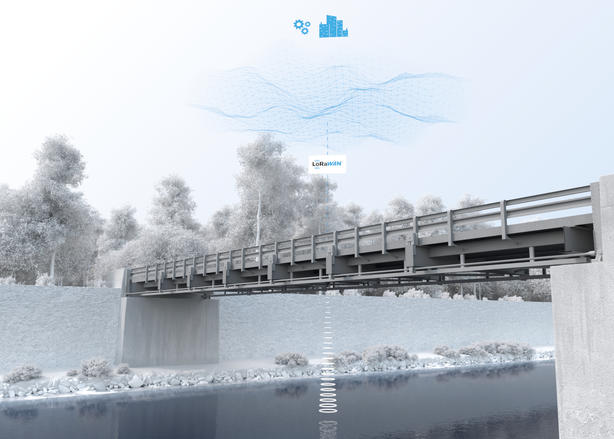
The risk of extensive flooding is omnipresent in many areas close to rivers. The WILSEN.sonic sensors are a key component in overcoming this danger. As these sensors not only transmit water levels, but also their geoposition, the data from various sensors installed on bridges, for example, can be spatially assigned and correlated.
This fine-meshed view of the development of individual water levels and the inclusion of historical and current weather data enables AI models to precisely predict when and where flooding is likely to occur. The necessary protective measures can thus be taken before crisis situations arise. By linking to current weather data, the transmission interval of the sensors can also be automatically adjusted so that they transmit data less frequently in fair weather conditions than when precipitation is forecast. This extends the service life of the already long-lasting batteries even further.
Smart Farming
Feed Silos
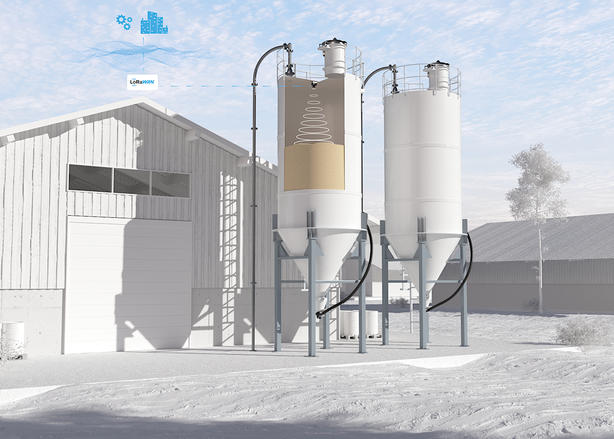
To check the fill level of agricultural silos, the outer layer is often tapped with a rubber mallet or a rod and the fill level is determined based on the acoustic resonance. This procedure naturally does not offer the precision of a sensor solution and, in the case of higher silos, also involves the risk of accidents on vertical ladders. However, retrofitting a sensor solution often seems too complicated or error-prone: in addition to the problem of ensuring the power supply to the silo, difficult ambient conditions and possible residues on the sensor make the use of many contactless sensor types almost impossible. Mechanical sensor solutions, on the other hand, are subject to wear and tear on moving parts.
The WILSEN.sonic provides a remedy here: the wireless ultrasonic sensor, which does not require an external power supply, can be easily mounted in the headspace of the silo using the supplied mounting plate, from where it continuously transmits level data via radio. In the unlikely event that dust deposits occur on the sensor's low-adhesion transducer, these usually have no effect on the reliability of the measurement results thanks to the low-interference ultrasonic operating principle. With its wide temperature range of -25 ... 70 °C and degree of protection IP66/67, the sensor can withstand temperature fluctuations in the silo as well as cleaning the inside of the silo with water.
Slurry Pits
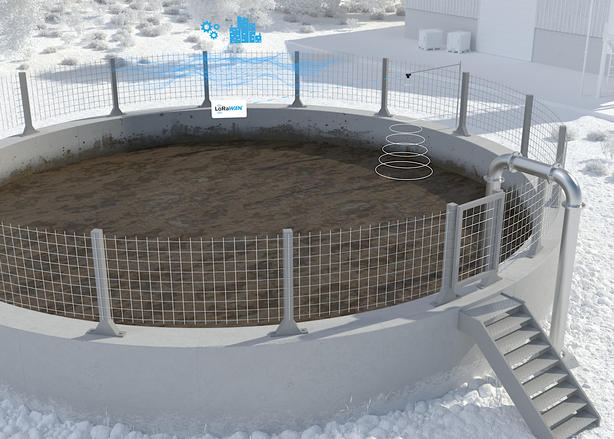
The monitoring and emptying of slurry pits is one of the many tasks on farms. This is usually done on the basis of experience and regular visual inspections. Nonetheless, it cannot be completely ruled out that the task is forgotten for a short time, that an intermediate slide valve does not close properly or that the pit overflows unnoticed due to unexpected heavy rainfall. This results in unplanned work, soil contamination and, in the worst case, even legal consequences due to possible negligence.
This risk can be minimized with little effort using WILSEN.sonic sensors. Once a sensor has been mounted on a boom above the slurry pit, it monitors compliance with limit values at all times. If the limit value is reached, the farmer is notified in time by the downstream IoT platform. The robust design with a PTFE-coated transducer, protection class IP66/67 and a wide temperature range of -25 ... 70 °C, is also suitable for this challenging outdoor application.
Projects from the Field …
More transparency, optimized routes, reliable level monitoring and advanced data models—the smart ultrasonic sensor WILSEN opens up new added values in municipal waste disposal management, wastewater management and flood protection. Get insights into a number of successfully implemented customer projects here.
LoRa Park in Ulm
With the "LoRa Park", the city of Ulm has created a place where sensor-based solutions for the Internet of Things can be experienced and made accessible to all citizens. Using the WILSEN, the detection and transmission of the fill levels of bottle banks is demonstrated here.
Learn more (German only)
Canal Monitoring at Lake Constance
The WILSEN at REMONDIS Aqua in Lindau on Lake Constance provides deep insights into sewers and shafts. On the one hand, the sensor monitors the discharge of external water into the wastewater network and, on the other hand, the extensive sensor data is used to calibrate hydraulic wastewater models.
Learn more (German only)
Smart Waste Management Heidelberg
Together with its partners SAP and Smart City Solutions, Pepperl+Fuchs has developed a solution for the city of Heidelberg based on ultrasound technology and LoRaWAN® that enables the smart, demand-oriented emptying of waste disposal containers in the city. The basic module of today's WILSEN was used here.
Learn more
Flood Protection Wuppertal
The WILSEN not only performs well in container monitoring: In the region around Wuppertal, it is a key component in a pioneering lighthouse project for flood protection. The level data transmitted by the sensors is incorporated into an AI model that makes it possible to predict possible flood disasters in advance.
Learn more
Smart Region South Baden
The "Smart Region South Baden" real lab is a joint project of badenovaNETZE and Thüga. As part of this initiative, various smart city use cases were implemented with the cooperation partner E-MAKS. This included an optimization of the collection routes of glass containers in the Freiburg area. Here, the WILSEN from Pepperl+Fuchs was successfully implemented.
Learn more (German only)How Does it Work?
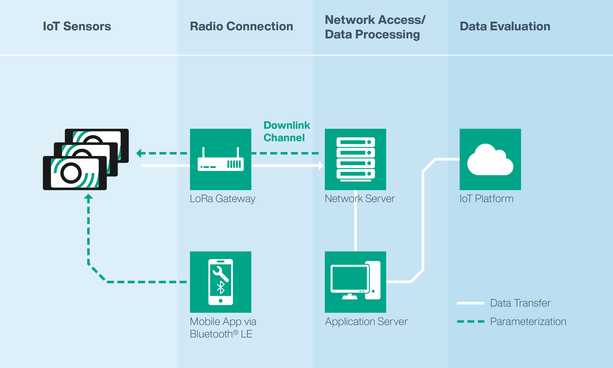
A so-called LoRaWAN (Long Range Wide Area Network) is required to transfer measured values from the WILSEN IoT sensors to a cloud-based IoT platform and evaluate them there. These easily scalable networks, which are fully geared towards the requirements of the IoT, are characterized by their combination of low energy consumption, long range and secure communication.
In addition to the IoT sensors or other end devices, such a LoRaWAN architecture usually consists of long-range gateways arranged in a star topology. These gateways translate the data from the WILSEN sensors into an Ethernet-capable protocol and transmit the converted information to a LoRa network server. The network server decodes the sensor data and forwards it to an application server for initial processing before the data can finally be evaluated in an IoT platform.
At the same time, communication in the opposite direction is also possible via the LoRa network server and the gateways: not only can sensor data be received, but parameter settings in the WILSEN sensors can also be conveniently made remotely via the so-called "downlink channel". Pepperl+Fuchs provides a free web service specifically for this purpose.
Alternatively, the sensors can be parameterized directly on site using a mobile device app.
Videos
Battery-Powered IoT Sensor Solution for Outdoor Use

The wireless, autonomous WILSEN IoT sensors reliably supply data regarding fill level, distance, valve position, and object presence to a LoRaWAN without a cable connection. Learn more about their functional principle and unique features.
Parameterization of WILSEN Sensors via the Downlink Channel

How do you parameterize the WILSEN sensors from Pepperl+Fuchs via the downlink channel? In this video, our expert shows you how to set it up quickly and easily.
LoRaWAN®
IoT Enabling Technology with Numerous Advantages
As a member of the LoRa Alliance®, Pepperl+Fuchs is commited to delivering product interoperability and worldwide deployment of this technology.
LoRa technology features a number of advantages that are especially suitable for use with IoT sensors such as Pepperl+Fuchs’ WILSEN:
- Connection of devices up to 15 km away
- Global availability and vendor independence
- Minimal power use during transmission
- Data transfer via radio, no sensor cabling required
- High security and integrity
- Low operating costs
These properties mean that LoRa can be used to create very large wireless networks to implement applications for cities, municipalities and various industries. It can also be used to set up cost-effective private networks on company premises.

Our Partners
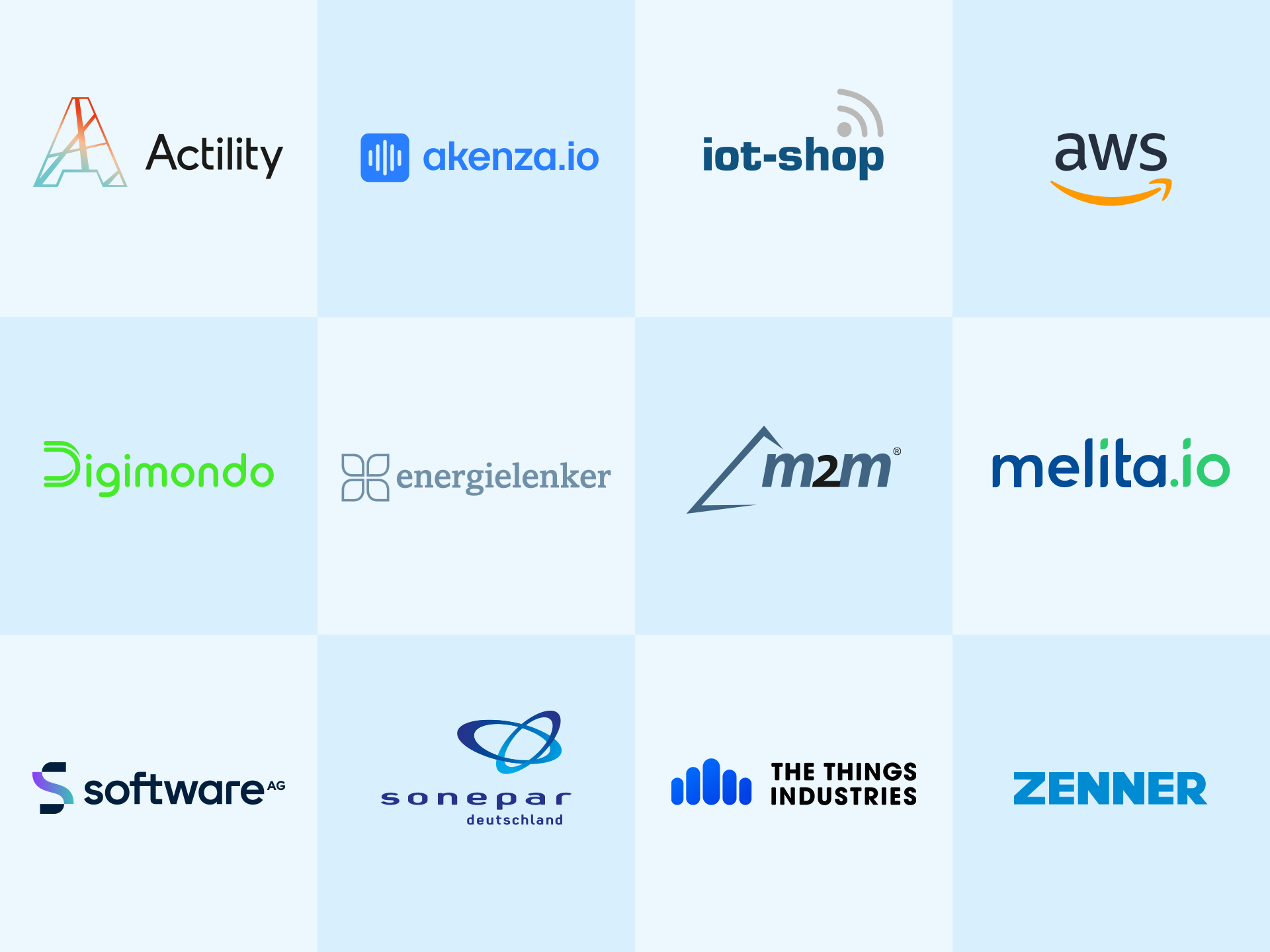
We are optimally networked and can accordingly draw on a broad pool of partners from the LoRa and IoT sectors. Benefit from the combined expertise of Pepperl+Fuchs and these renowned partners when implementing your projects.
Services for Your Success
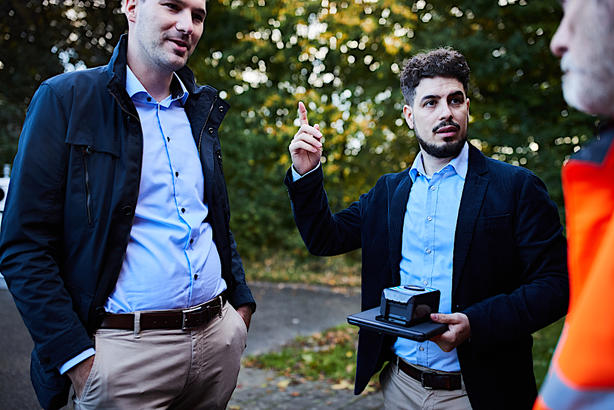
Ultrasonic sensors from Pepperl+Fuchs are built in our own technology center, where transducer development and manufacturing take place. For more than 30 years, our forward-thinking team of experts has been working continually to advance ultrasonic technology for the solutions of tomorrow. That means our customers always receive the highest performance products on the market.
We offer not only technical excellence, but also first-class service and support: Our global presence, our deep understanding of different industries and our customer focus set us apart. Of course, this also applies to our portfolio of WILSEN sensors: In this section you will find a selection of tools to help you always get the most out of your sensors and keep operating costs as low as possible.
联系我们
 More Information
More Information
- WILSEN.sonic Ultrasonic Sensors (Datasheets)
- LoRa Alliance




 Downloads
Downloads

 +86 10 5901 7000
+86 10 5901 7000